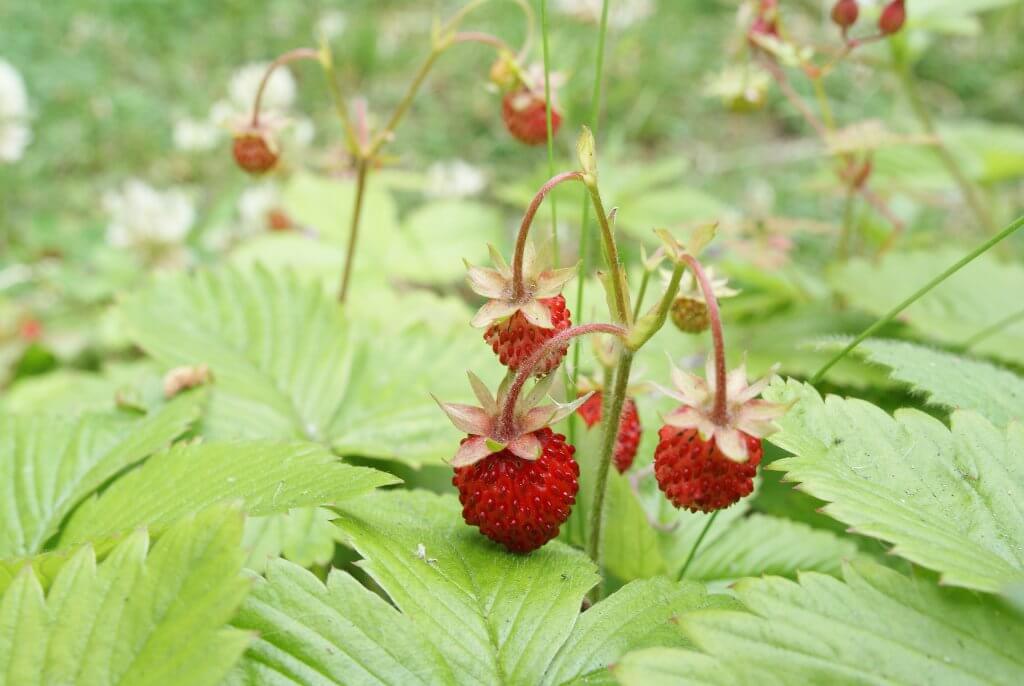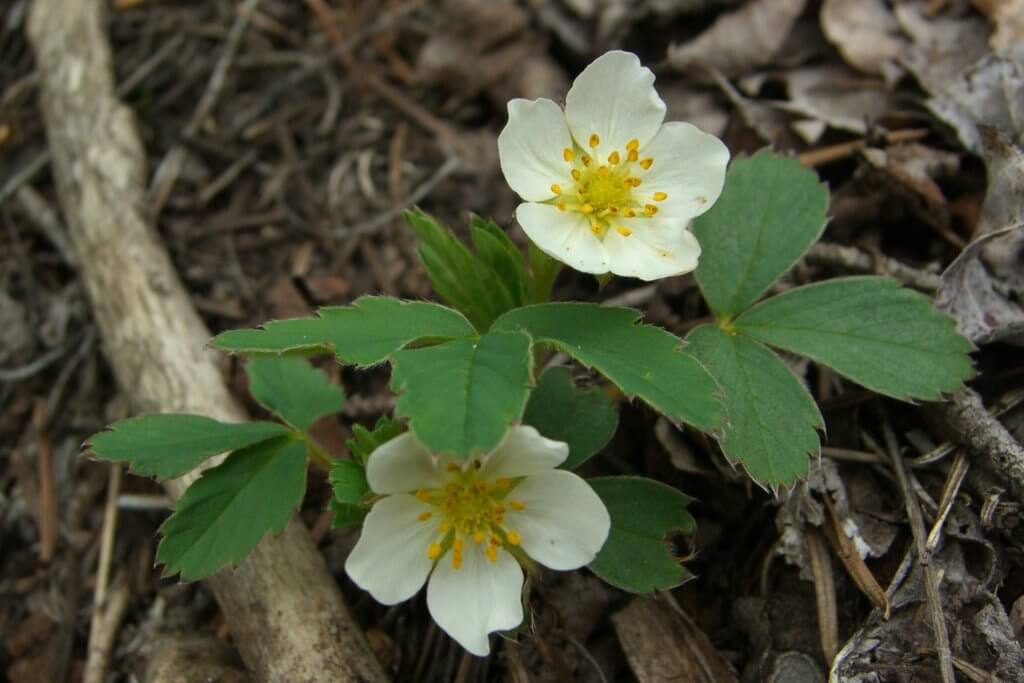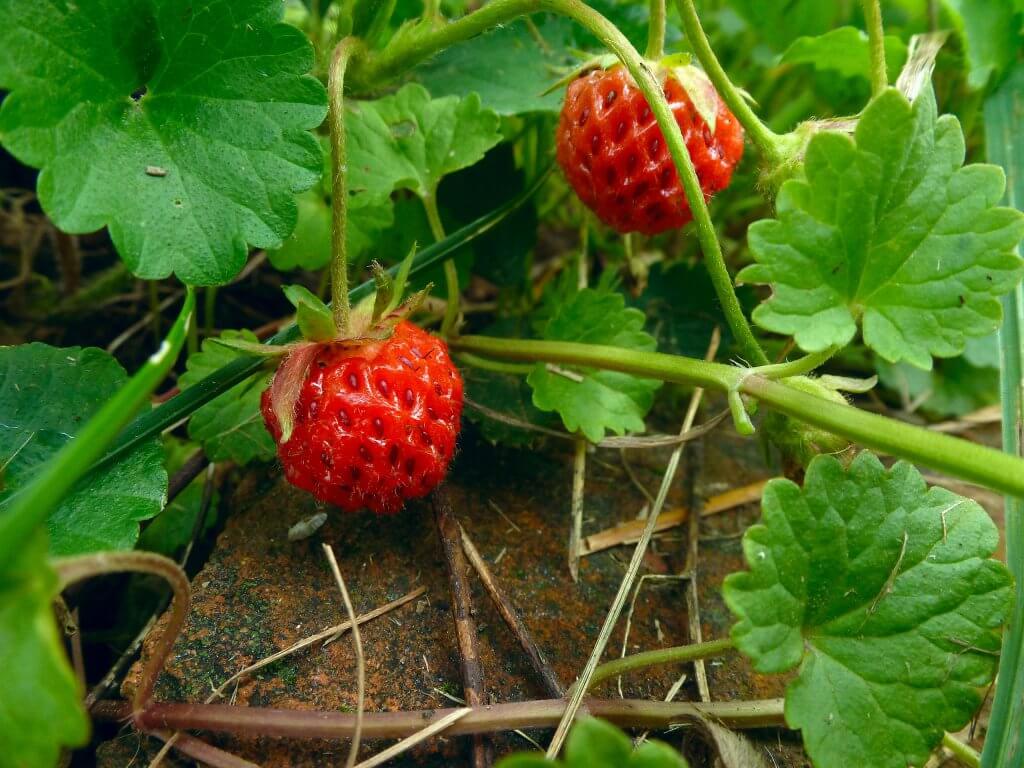Wild Strawberry (Fragaria spp.), a coveted wild edible favorite. The most commonly occurring species in the Northern hemisphere is the Fragaria vesca, otherwise known as the woodland or alpine strawberry. They grow prolifically in the wild throughout Europe, Russia, China and the United States. A species known as the common strawberry (Fragaria virginiana) is also specifically native to North America and common throughout the midwestern states.
You’ll find them growing in a variety of locations, but they thrive within in areas that receive full or partial sunlight. From roadsides to forest clearings, rocky outcrops and woodland meadows. They grow in moist but well draining soil, and will generally not survive a drought or being situated in heavily water logged soil.

Wild strawberries are low growing, usually reaching no more than 20cm in height. Their trailing runners reaching out across the ground, bearing lightly serrated leaves in groups of threes. During the spring, white flowers will appear on hairy stems in small clusters. From the center of these flowers, the fruits will start to form. Moving from a spring green, to white, finally ripening in the sun to a bright blush red. The berries are very similar in appearance to domesticated strawberries, they are just a little smaller and rounder in size.
Edible parts and other uses
Appreciated world wide for their sweet and delicate flavoring, wild strawberries hold all of the same delights as the domesticated strawberry. Although they can be a little smaller in size, they have the same sweet flavoring that many claim is even better than the larger strawberry. They can be used in any recipe that calls for strawberries. From wild strawberry jam, to fruit pies, tarts, smoothies and ice cream, wild strawberries are very versatile.
The leaves of wild strawberry also have a history of use too. They are considered edible, however they are perhaps best used to create a sweet tasting strawberry tea. Strawberry leaf tea was often drank as a medicinal drink, thought to be able to soothe and heal stomach upsets and even urinary problems.
Cautions
Whilst foraging for wild strawberries it is fairly important to be aware of a lookalike species called ‘mock strawberry’ or ‘Indian strawberry’. Although not poisonous, the mock strawberry holds barely any flavor compared to a true wild strawberry. The main difference to look out for are the petal colors. Mock strawberries have yellow flowers, whereas wild strawberries are white. If no flowers are visible, simply crush a berry between your fingers to test the scent. Only a wild strawberry will emit the sweet fragrance of a true strawberry.

Foraging
Wild strawberries can be a rewarding find whilst out for an afternoon hike. Eaten straight from the plant they make a refreshing snack. However collecting a punnet or two to take home for cooking is more than worthwhile.
The fruits begin to ripen a little earlier than their domesticated cousins, so start keeping an eye out for them in spring and early summer. Look for them on slightly rocky but moist ground, on forest edges or alpine slopes. Because of their shallow roots, they grow well in rocky areas that other plants may struggle to adhere to.
Wild strawberries can bruise easily, so pick them with care and try not to stack them too high within a basket or collecting tub.
Did you know…
The common strawberry (Fragaria virginiana) was one of the original species hybridized to create the domesticated garden strawberries that are commonly cultivated today.

Conclusion
Full of vitamin C and other nutrients, wild strawberries are nutritionally beneficial and fun to forage. They are also a wonderful plant to cultivate yourself at home. Growing across the ground on short runners, they will easily form new new plants and you will soon have a fruitful patch.
—————Written by Hannah Sweet
Hannah is a freelance writer and graphic designer from the UK. With a penchant for travelling, photography and all things botanical, she enjoys writing about a wealth of topics and issues, from conservation and slow living, to design and travel. Learn more about her writing and design services at www.sweetmeanders.co
Many of our readers find that subscribing to Eat The Planet is the best way to make sure they don't miss any of our valuable information about wild edibles.
See our privacy policy for more information about ads on this site






